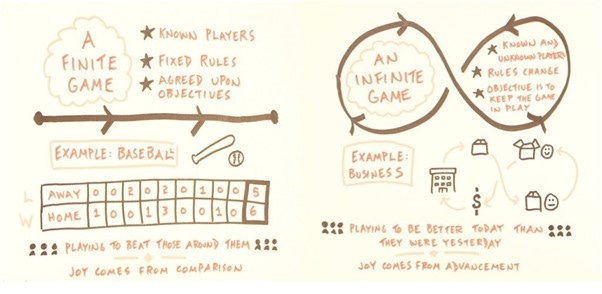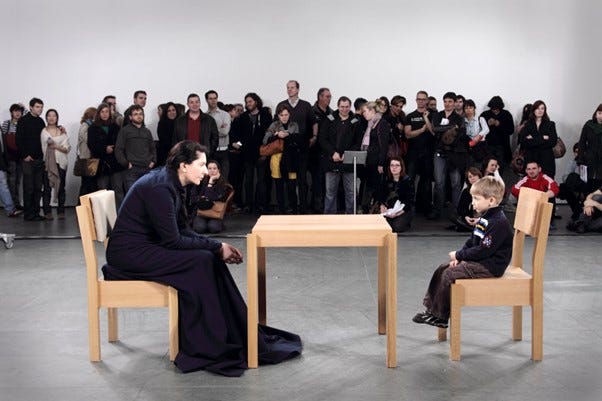I reckon it all started with what I thought would be a shortcut through my semester abroad at Copenhagen Business School. "Contract, Agency, and Game Theory" seemed like a familiar path for an elective course, promising a gentle jog through concepts I'd met before a dozen of times. But, as fate would have it, I found myself in the deep end of an 'Advanced Economics & Finance' master's course, miles from the comfort zone of common knowledge I'd anticipated.
What started as an accidental deep dive turned into a fascination I didn’t see coming. Game theory wasn’t the dry academic maze I somewhat feared… it became a way to understand many of the “things” happening around me—on the court, in the media, and in everyday decisions. It’s one thing to learn about Nash Equilibriums in a classroom; it’s another to realize you’re applying them when choosing the perfect moment to exit a party without it being awkward.
But wait… should we roll back to a more general ‘what are we talking about’?
At its core, game theory is the study of strategic decision-making. It’s about anticipating how others will act and adjusting your own moves accordingly—whether you’re negotiating a business deal or deciding how to split dinner with friends. Originally developed for economics and warfare, its reach now extends far beyond spreadsheets and battlefields. Why? Because modern life is full of decisions that aren’t just linear but interdependent, where every choice you make subtly shapes what happens next.
Now we come to the interesting bit…in today’s world, game theory takes on an entirely new dimension—one shaped by an overwhelming abundance of choices, endless digital distractions, and the fight for our attention. The games we play now aren't generically about economics and competition as much as they are about “survival” in an attention economy where everyone—brands, media companies, and even our own subconscious—is playing to win.
The game of infinite scrolling
Unlike a classic zero-sum game—where one player’s gain is another’s loss—the relationship we have with distraction is more complex. Platforms thrive on our engagement, and in return, they offer us entertainment, connection, and a constant stream of content. It’s not necessarily a battle, but a delicate exchange—one that requires us to be more mindful of the choices we make.
Take infinite scrolling—it’s designed to be seamless, frictionless, and, at times, borderline hypnotic. Each swipe presents an option: stay engaged or move on. But with carefully curated algorithms that anticipate our interests and behaviors, it’s easy to lose track of time. It’s not that platforms are out to get us; they’re simply optimizing for what keeps us coming back.
Daniel Kahneman’s insights on cognitive biases and fast vs. slow thinking (yes, those ones I talked about here) add another layer to this dynamic. Our fast-thinking System 1 brain craves the instant gratification of a like or a scroll, while our slow-thinking System 2 barely stands a chance in a world engineered for constant engagement. As I reflected in my previous article on Kahneman, understanding these cognitive processes is crucial—not just for better decision-making but for reclaiming control over how we engage with media and technology.
So, what’s the counter-strategy? Awareness, for one. Creating friction—like setting boundaries, muting notifications, or whatever suits you—can help us take back control and make the game work in our favor. As Kahneman himself suggested, recognizing our cognitive shortcuts is half the battle; the other half is finding ways to challenge them.
From the Court to the Screen: Strategic Adaptation
Game theory isn't just confined to the economic or digital realm: it's everywhere—arguably it plays a big part in sports (consciously and, often, without us realizing). Every play, decision, and adjustment is a strategic move. Consider how a basketball team (yes, that’s my sweet spot) adapts mid-game—switching defensive schemes, tweaking offensive plays, and making split-second decisions to exploit the opponent’s weaknesses. It’s not just about who has the best players; it’s about reading the game, predicting patterns, and responding in ways that tilt the odds in their favor.
Strategic adaptation is crucial. Coaches often employ a "games approach" to teaching, where players learn skills through modified game scenarios that mimic real in-game situations. This method emphasizes decision-making, pattern recognition, and strategic thinking, allowing players to anticipate opponents' moves and respond effectively. By engaging in these practice games, athletes develop a deeper understanding of the game's dynamics, enhancing their ability to adjust tactics in real-time. This approach not only improves individual skills but also fosters team cohesion, as players learn to read the game collectively and make synchronized strategic decisions.
In the article "Basketball on Paper: Game Theory", the application of game theory in basketball is nicely explained, emphasizing the balance between individual and team dynamics:
Now – if you really have time to spend on this – I would even recommend you to get lost in this video showing a games approach to teaching basketball skills from Coach Mike MacKay:
Cognitive Load: the Modern Opponent
The games we play in the digital world aren’t battles of strength or speed—they’re clashes of endurance. But not the kind you win with sheer willpower. The opponent here is cognitive load, and the more you engage, the weaker your ability to make thoughtful decisions becomes.
Cognitive load is like playing an iterated game of diminishing returns. Every choice—every click, every scroll—saps a little more of your mental energy. By the time you’re 20 decisions deep, your ability to make intentional choices is shot. It’s not that you’ve lost the game; you’ve been worn down by it.
In behavioral economics, this is known as decision fatigue. It’s the reason judges are more likely to deny parole at the end of the day than in the morning, and why you’ll grab that bag of chips at 11 PM despite your best intentions. The more decisions you make, the less deliberate each one becomes.
Richard Thaler’s work on behavioral economics highlights how we tend to overvalue immediate gratification while underestimating long-term consequences—a principle that digital platforms understand all too well. They don’t have to convince us to want something; they just need to make it easy enough that we’re too tired to resist. And that’s the real trick of the attention economy: it doesn’t overwhelm us with force; it wears us down with options.
Now here’s what I think it’s a fitting counterpoint to the chaos of cognitive overload.
In Marina Abramović’s famous performance, she simply sat in silence for hours, inviting visitors to sit across from her and do nothing but be present. No distractions. No interruptions. Just the pure, unmediated experience of human connection. It’s an art piece, yes, but also a radical act in today’s attention economy—a reminder that the most powerful response to cognitive overload might just be stillness.
If cognitive load is the game, presence is the counter-strategy. Slowing down, reclaiming mental space, and recognizing when you’re at the edge of decision fatigue can help you navigate modern life more intentionally. Game theory teaches us to recognize diminishing returns and adapt accordingly. The best move isn’t always to push through. Sometimes, it’s knowing when to stop playing altogether.
So, what’s the Winning Strategy?
If game theory has taught me anything, it’s that the best players aren’t always the fastest or strongest—they’re the most adaptable. Not just mastering the game—they sometimes simply change the rules. Navigating the complexity of modern life isn’t about hustling harder or building mental endurance. It’s about knowing when to lean in, when to adjust your strategy, and when to walk away.
How do we play this game intentionally?
Know the game you’re playing. Whether you’re on a basketball court, negotiating at work, or navigating a digital platform—recognize the patterns and power dynamics at play. Platforms have a playbook—so why shouldn’t you? Awareness is your first advantage.
Curate your own distractions. Be intentional about where you invest your attention. Not all distractions are created equally. Some recharge you, others drain you. The key is in choosing.
Introduce pauses. Embrace friction. Life isn’t a sprint; it’s a series of plays. Build moments of stillness into your strategy. Slow things down. Turn off the auto-anything. Create space for choice. Sometimes the best move is simply observing, recalibrating, and taking time to process before the next step. Presence can be a power move.
At its core, understanding game theory is about reclaiming agency. It’s about recognizing the hidden strategies and power plays shaping your day-to-day life, and deciding—consciously—how you want to engage with them.
The next time you feel pulled in a hundred directions or caught in an endless loop of decisions, ask yourself: am I playing this game, or is it playing me?
Game theory may have started as an unexpected challenge in a classroom, but it’s become a lens through which I see the constant push and pull of modern life. And perhaps the biggest lesson of all is that sometimes—often times—the smartest move is realizing you don’t have to play at all.
And that—quietly, almost subversively—feels like victory.





